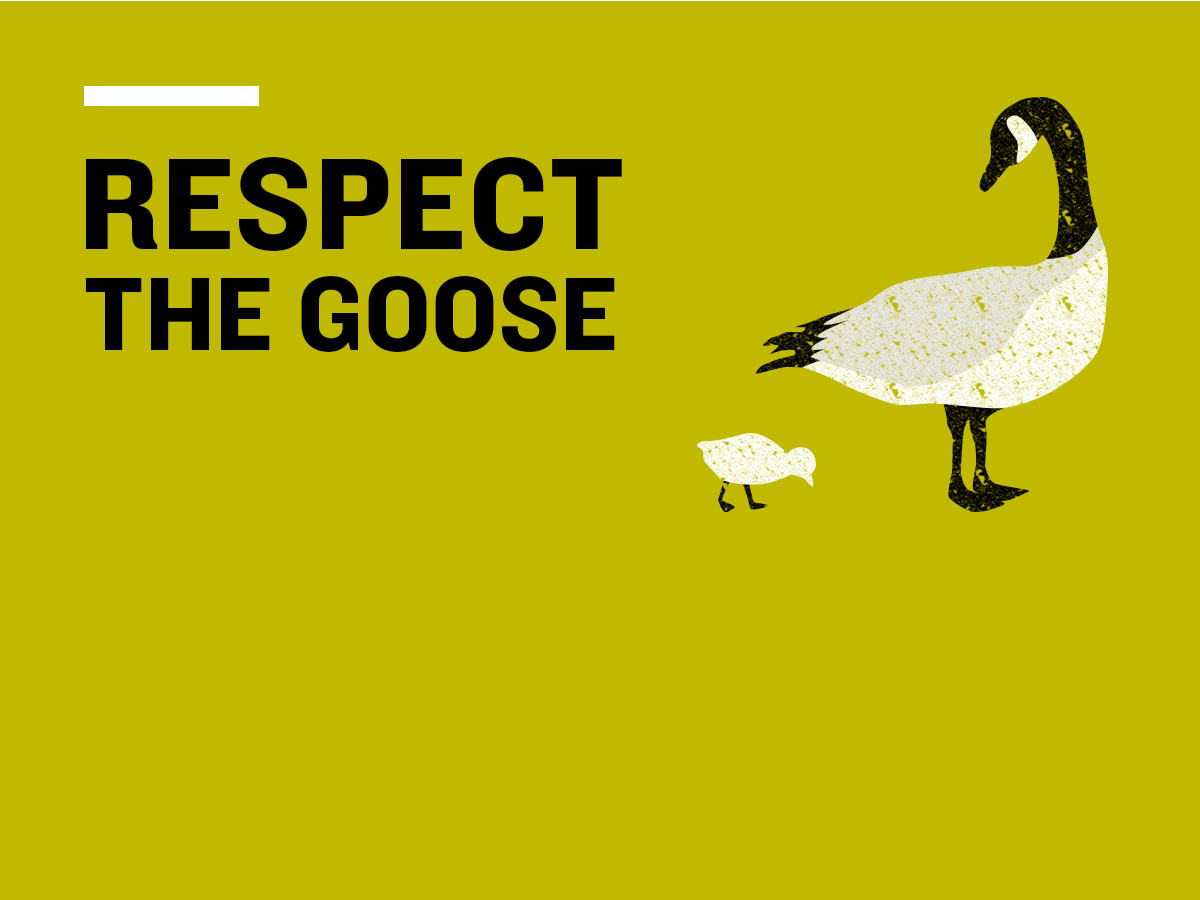
Can’t we all just goose along?
Respect the goose: Tips for cohabiting with campus wildlife
The geese are back, with more returning over the next several weeks to set up their summer homes on campus and raise their families. Many pair off, select some prime real estate and start nesting, often right beside buildings and walkways.
“Geese have as much right to create a nest and rear their young as you do to purchase a house and live in it,” James Shapiro reminds us. He is associate professor and director of the Avian Behaviour Laboratory in the psychology department, Faculty of Arts, at the U of M.
These unique campus community members can be aggressive when they feel threatened, but with some consideration, geese and humans can share the campus without incident.
For best relations, here are some tips from our U of M experts.
Geese don’t want to be in your selfies
While it may be tempting to get that perfect shot with wildlife so close, getting too close can make the goose feel threatened. Nesting geese often have a mate nearby who may see the photographer as a threat and attack.
When taking photos of wildlife, give a wide berth, says Kevin Fraser, head of the biology’s Avian Behaviour and Conservation Lab in the Faculty of Science at the University of Manitoba. Don’t take photos that require getting too close!
People food is not goose food
Your kindergarten teachers told you that “sharing is caring,” but this doesn’t apply to feeding geese.
Geese don’t want your food, and human food may be harmful to their health, says Fraser. There is plenty of grass for them to eat. Don’t feed them.
Do not disturb
Geese are territorial. A nesting goose would rather be left alone. “For a goose to successfully complete nesting and fledge their young, disturbance should be limited as much as possible,” says Fraser. Approaching the nest can cause stress and affect the goose’s ability to complete nesting and fledge their young. Don’t approach.
If you see a goose that needs help, contact Physical Plant at 204-474-6281 or email: goose [at] umanitoba [dot] ca
Do not try to help the animal yourself. Physical Plant staff have consulted with Environment Canada experts and the U of M Avian Behaviour Laboratory for advice on how to manage the hatching process.
Leave space
We can all get along — just keep these tips in mind! The campus wildlife is interesting and fun to watch — but be sure to do so from afar. What to do if you encounter a goose.
With some understanding from the human members of the campus community, humans and geese can live well together.
 This story is part of the U of M’s “Respect the Goose” education and awareness campaign regarding the goose population on the Fort Garry campus with input from internal and external experts and other stakeholders. Respect the Goose series: news.umanitoba.ca/category/respect-the-goose/
This story is part of the U of M’s “Respect the Goose” education and awareness campaign regarding the goose population on the Fort Garry campus with input from internal and external experts and other stakeholders. Respect the Goose series: news.umanitoba.ca/category/respect-the-goose/
Read more here: Geese who’s back?, here: Geese are part of our campus community and here: Take a gander: Nesting locations, geese population management, community safety — now with interactive map!
Or follow us on social media here: https://twitter.com/umanitoba #respectthegoose






